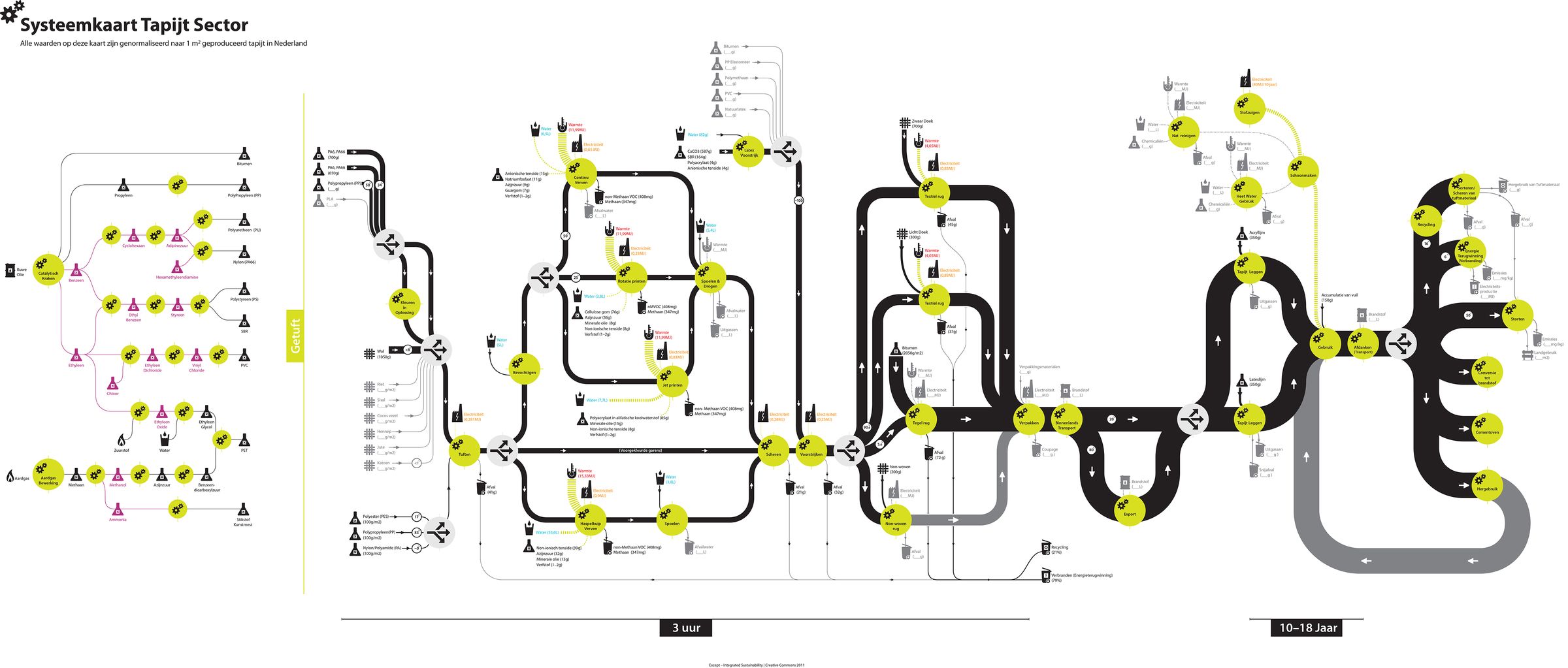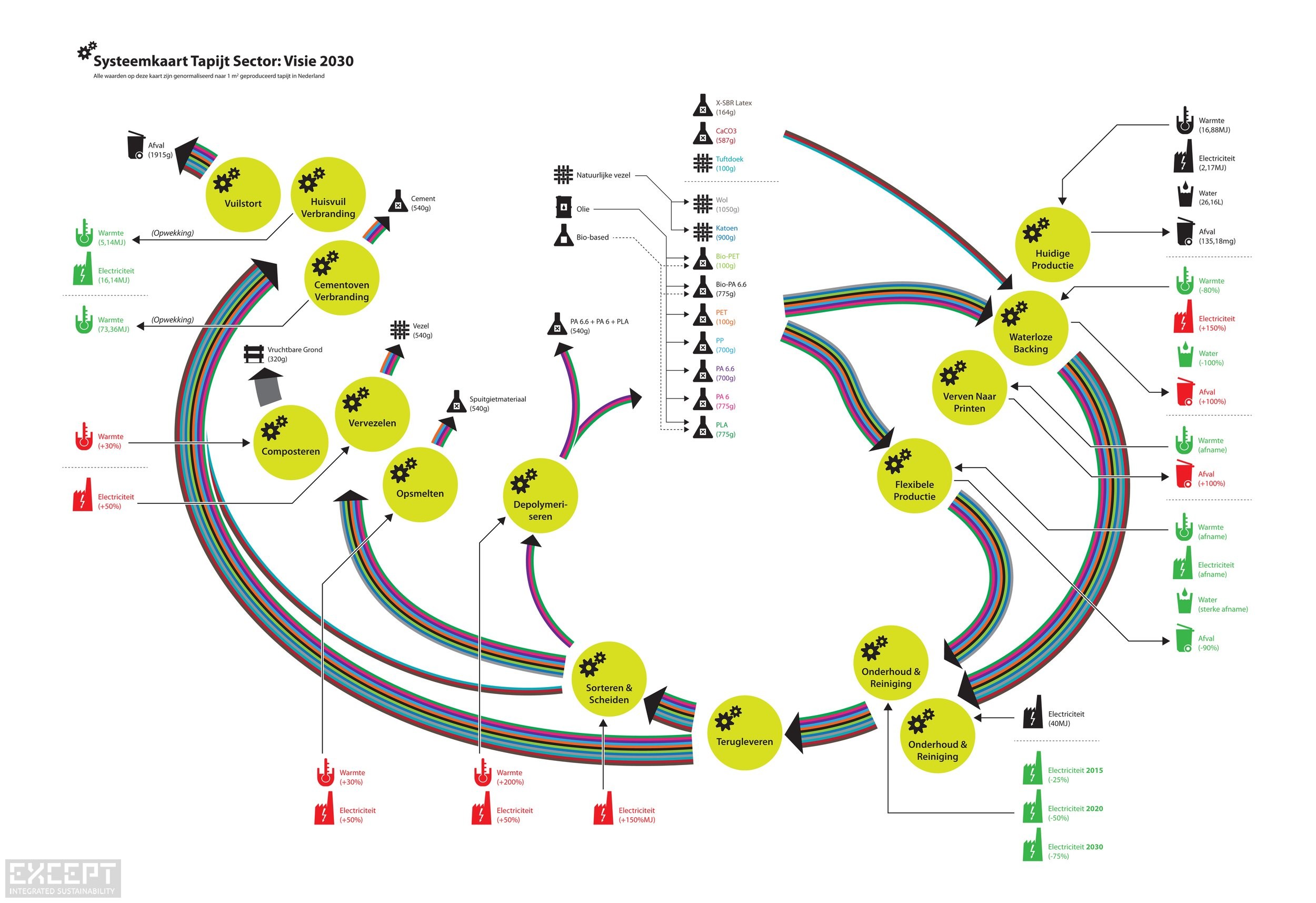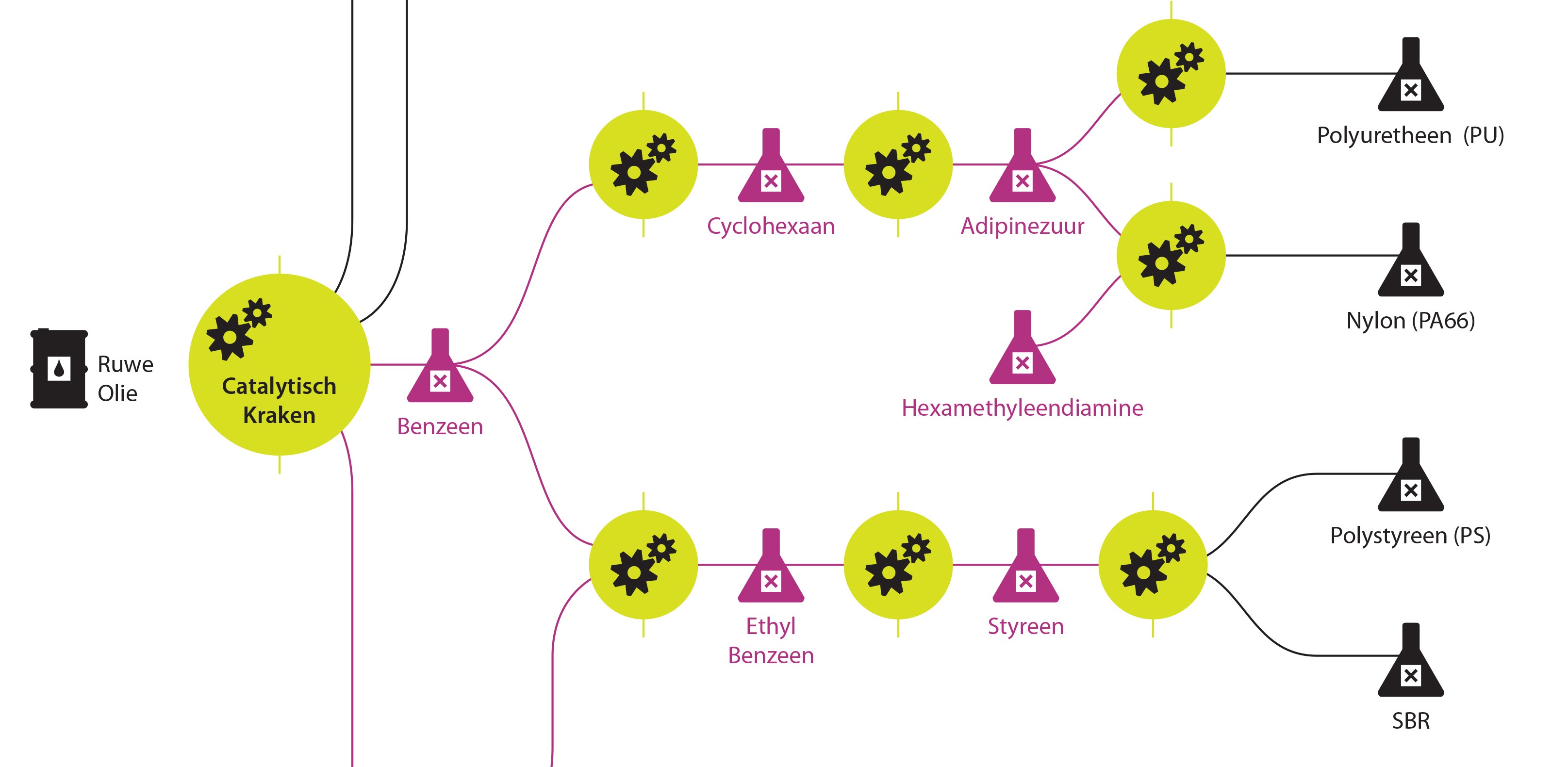

Carpet sector roadmap
Mapping the carpet sector towards 2030
Apr 14, 2014

A major challenge within the carpet manufacturing sector is securing the right resources to continue production. We partnered with MODINT and DNV and adopted system mapping and visualization techniques to offer insight into interventions and transitions the industry can take toward a more circular and bio-based sector.

Most carpets produced today are made from oil-based materials, such as polyester and nylon. This means that not only are the production processes more damaging to the environment but they are also more difficult, often impossible, to recycle after their use.
Together with DNV, we investigated two innovative approaches within the sector to secure supply chains and the future of carpet manufacturing:
We mapped the Dutch carpet sector and developed a road map to produce a circular carpet industry by 2030.
We developed a sector-wide system map to observe better and understand the complexity of the flows and relationships. This map visualizes material flows and clarifies how current resource use can be altered and transformed into a more sustainable system.
This process brings together all stakeholders and helps make strategic decisions on making circular connections, sector-wide improvements, and collaborations more straightforward.
Below is an example image of this map. The outer circle shows current resource flows, whereas the inner offers new pathways and technologies that can transform the sector into a circular economy.

The visualization of such a complex system creates an understanding of how the carpet sector can evolve its supply chain and enables clear communication about future strategies. Clarity and understanding are vital ingredients for the industry to work together and define programs in which competitors can cooperate and transition toward a circular business model.

April 14, 2014
Director
Industrial Ecologist
Except Integrated Sustainability
Industrial Ecologist
Except Integrated Sustainability
Communication Strategist
Except Integrated Sustainability
Senior Associate
Except Integrated Sustainability
Project manager DNV
DNV